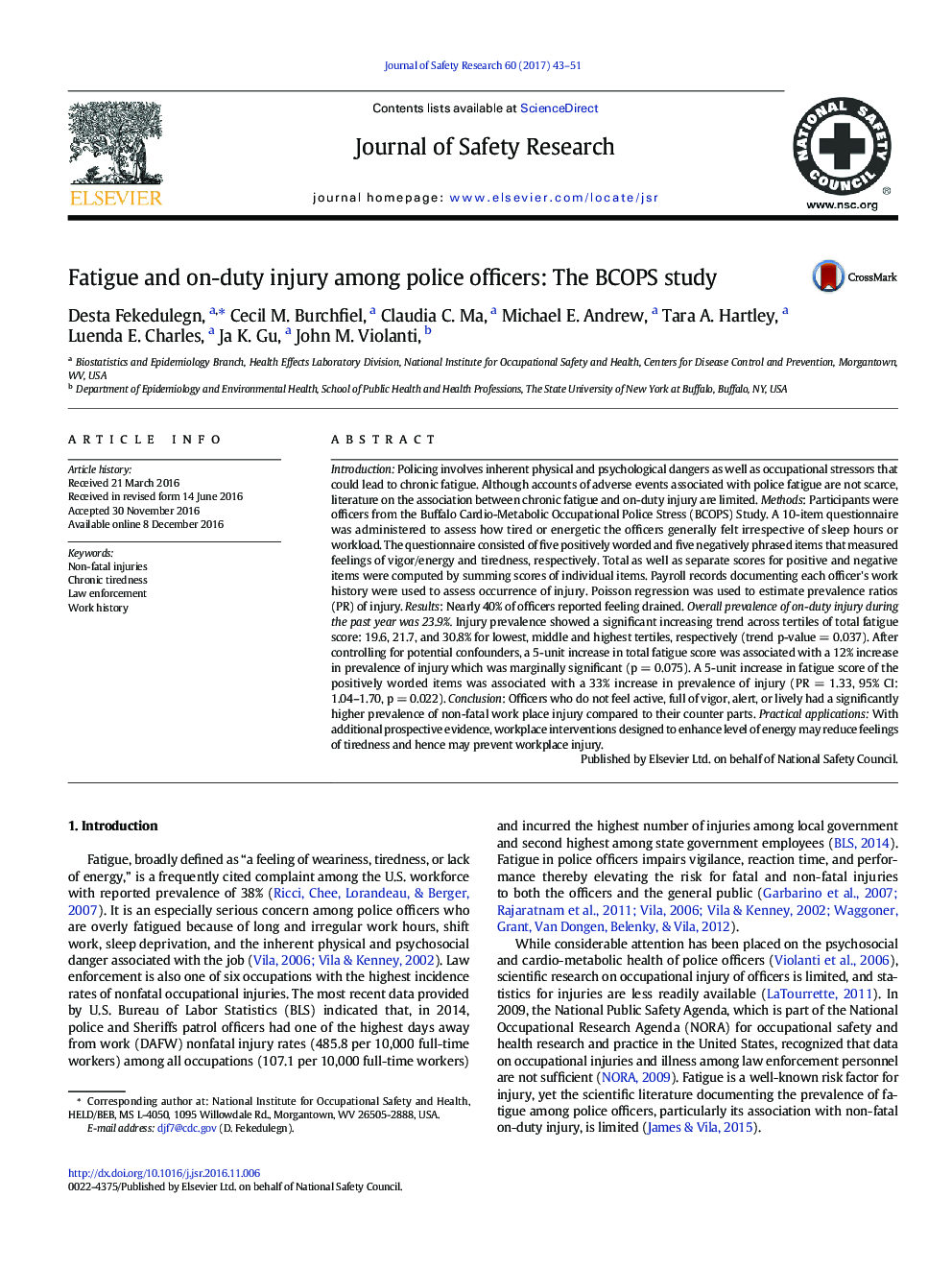| Article ID | Journal | Published Year | Pages | File Type |
|---|---|---|---|---|
| 4980588 | Journal of Safety Research | 2017 | 9 Pages |
â¢A validated chronic fatigue questionnaire was used to assess fatigue in officers.â¢Non-fatal occupational injury was ascertained using objective work history records.â¢Injury prevalence was higher in those who do not feel active, vigorous, alert, or lively.
IntroductionPolicing involves inherent physical and psychological dangers as well as occupational stressors that could lead to chronic fatigue. Although accounts of adverse events associated with police fatigue are not scarce, literature on the association between chronic fatigue and on-duty injury are limited. Methods: Participants were officers from the Buffalo Cardio-Metabolic Occupational Police Stress (BCOPS) Study. A 10-item questionnaire was administered to assess how tired or energetic the officers generally felt irrespective of sleep hours or workload. The questionnaire consisted of five positively worded and five negatively phrased items that measured feelings of vigor/energy and tiredness, respectively. Total as well as separate scores for positive and negative items were computed by summing scores of individual items. Payroll records documenting each officer's work history were used to assess occurrence of injury. Poisson regression was used to estimate prevalence ratios (PR) of injury. Results: Nearly 40% of officers reported feeling drained. Overall prevalence of on-duty injury during the past year was 23.9%. Injury prevalence showed a significant increasing trend across tertiles of total fatigue score: 19.6, 21.7, and 30.8% for lowest, middle and highest tertiles, respectively (trend p-value = 0.037). After controlling for potential confounders, a 5-unit increase in total fatigue score was associated with a 12% increase in prevalence of injury which was marginally significant (p = 0.075). A 5-unit increase in fatigue score of the positively worded items was associated with a 33% increase in prevalence of injury (PR = 1.33, 95% CI: 1.04-1.70, p = 0.022). Conclusion: Officers who do not feel active, full of vigor, alert, or lively had a significantly higher prevalence of non-fatal work place injury compared to their counter parts. Practical applications: With additional prospective evidence, workplace interventions designed to enhance level of energy may reduce feelings of tiredness and hence may prevent workplace injury.
